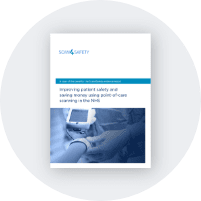

The clinical engineering team at Cambridge University Hospitals NHS Foundation Trust (CUH) was finding it difficult to keep track of mobile medical equipment.
As a leading national centre for specialist treatment of rare or complex conditions, it is vital that clinicians at CUH can access devices when and where they need them.
The inefficient system meant that clinical engineers were wasting time logging and recording each device manually. Clinical staff also spent time searching for equipment instead of providing patient care.
The engineers at CUH fitted GS1 EPC RFID tags to mobile medical devices, with each tag containing a unique GS1 Global Individual Asset Identifier (GIAI) key.
Specially designed trolleys fitted with powerful RFID readers are now used to automatically record the date, time and location of any tagged devices within range.
The team also has a small mobile handheld reader with a read range of six metres for when they perform specific equipment searches, or to audit wards.
Thanks to the implementation of GS1 RFID tags, clinical staff can now access medical devices where and when they need them. Average times for supplying a device to a ward is down to around 12 minutes. Audit times have been reduced significantly, too – from 90 minutes to just eight minutes.
Device utilisation has also increased. That means money isn’t wasted on needlessly hiring devices puchasing additional equipment.
Crucially, the use of RFID tags has also highlighted potential patient safety issues. For example, A&E had specific settings on syringe drivers, which caused problems when these devices were used by staff who were unfamiliar with the settings. The RFID tagging highlighted this issue, resulting in additional staff training and the introduction of generic settings.
If you would like to submit a case study demonstrating how your trust has implemented GS1 standards, email us at healthcare.casestudies@gs1uk.org